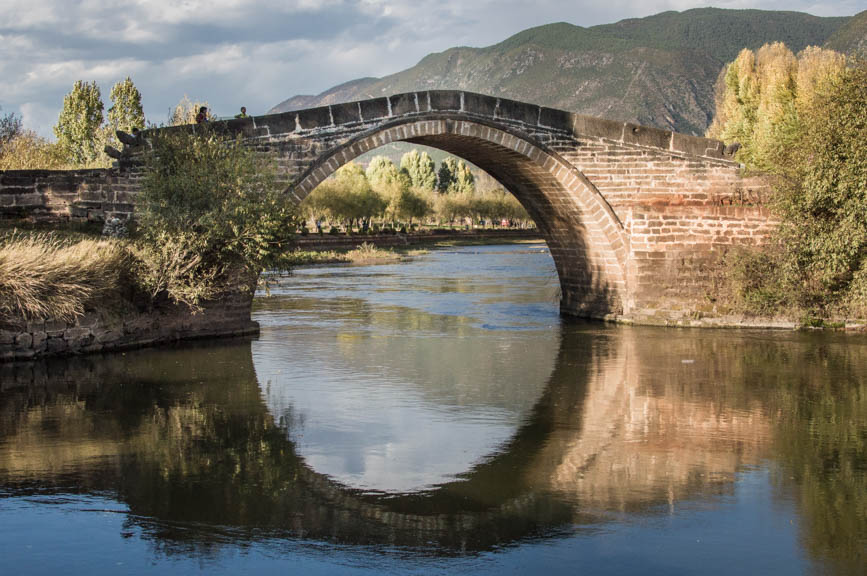Along the Tea Horse Trade Route in Shaxi 沙溪

“冬日暖阳 – winter days with warm sun.” – Chinese saying
The white sun burns my skin against the brisk air. It is early morning in Shaxi. All is quiet save for the sound of a set of old wooden wheels rolling over lose stones. It smells clean in that winter weather kind of way.
I down a spoon of hot congee and sigh. Shaxi is like a retreat from China’s chaos, welcoming you home with equal doses of village life, history and chocolate cake with cappuccinos. It is the comfort food of our journey through China.
One of the most well-preserved caravan towns of the Ancient Tea Horse Trade Route 茶马古道 it is now at the crossroads of the old and the new. Here, farming still rules over China’s obsession with concrete, three-wheeled tractors grunt in and out of the narrow village lanes, leaving a trail of black smoke in their wake. Behind them colourful street art grins from the white-washed walls, cheeky and defiant.
After following most of the Silk Road from West to East, we are now on the ancient tea route, sometimes referred to as the Southern Silk Road, where traders journeyed over daunting Himalayan terrain to bring bricks of Yunnan green tea to Tibet and further afield to Bangladesh and India in exchange for sturdy Tibetan horses.
We made our way to Shaxi through other trading points along the route, walking among the high plains of Shangri-la; trekking through the Tiger Leaping Gorge, where we bumped into our fellow Silk Road adventurers, Romain and Sophie from The Plan; lazed around the meandering canals of Shu’he near Lijiang and soaked up all the distractions available in the little alley ways of Dali. But Shaxi was our favourite.
The soft rolling hills and buttery fields are a nice break from the treacherous landslide-prone roads of Western Sichuan, vertiginous mountain curves replaced by rice paddies and tea plantations. It is a delicate taste of Yunnan, granting you the postcard views that everyone comes looking for in China without the mass tourism of Lijiang and Dali.

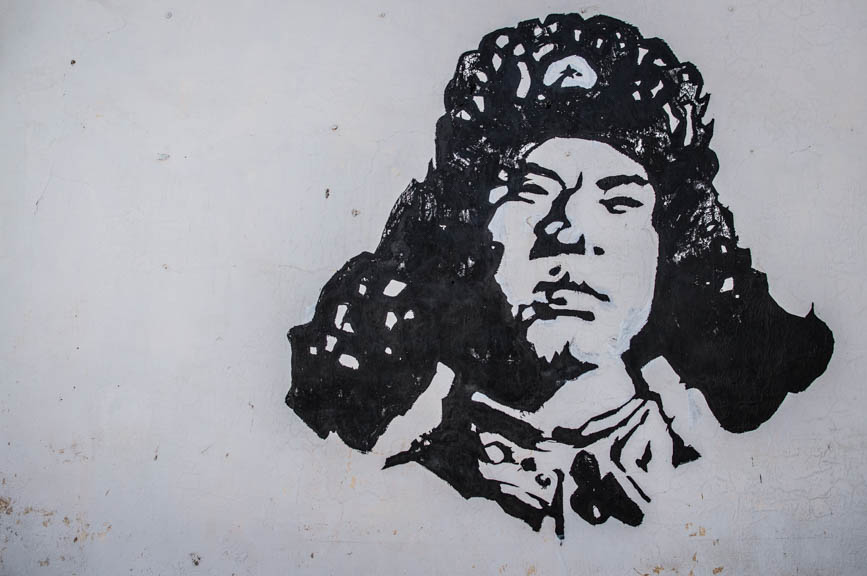
Sloping charcoal tiled roofs shade the streets, old houses are tightly knitted together, held up by wooden walls, their window shutters letting shreds of light in through intricate carvings. It is a sea of black waves, white walls and terracotta earth.
Off the main street there are no cars, the peaceful pedestrian way leading to the UNESCO heritage Sideng Market Square is laced with trendy cafes offering tea leaves in pretty packages, banana pancakes and for you Belgians out there, even the most hipster of them all – Vedette beer! At first we felt that familiar conflict, quite happy to spy ‘french toast’ on the menu, while at the same time dreading that bread dipped in eggs would be the highlight of this tourist trap.
We needn’t have worried because just off the main road is another world.
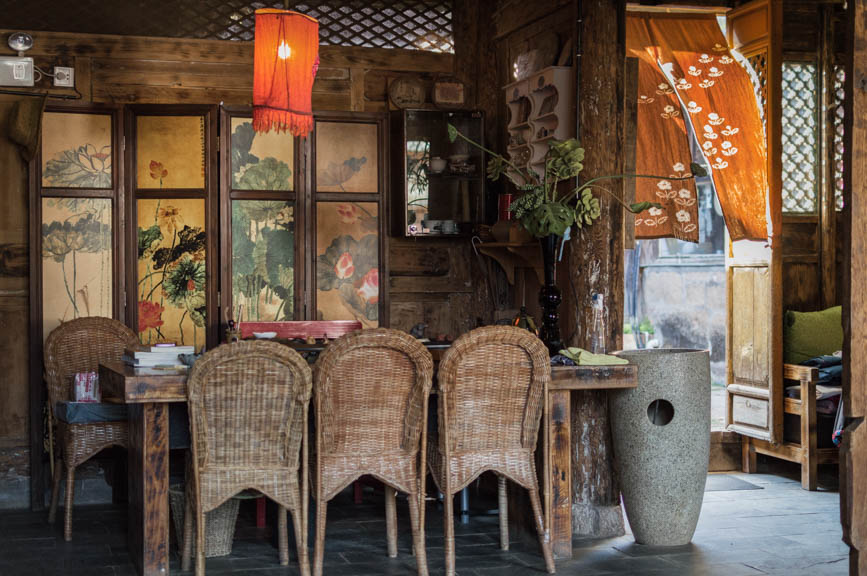
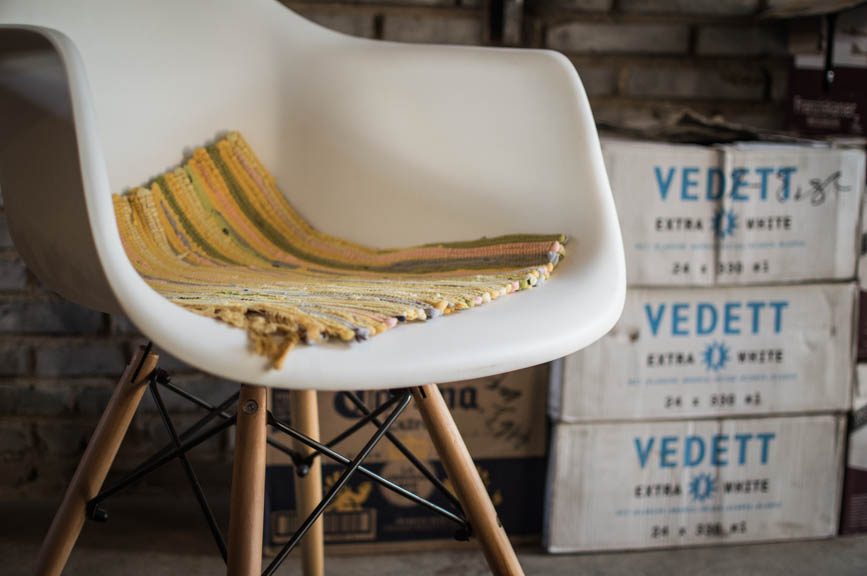
We set off across the river with our secret weapon, my lovely mother, who joined us for ten days in the region. She also speaks chinese which is an extra treat.
Wandering around, poking our heads through slightly ajar doors as you do, we are surprised when behind a wall of hanging golden corn, we see an old man waving at us. His over-sized black-rimmed spectacles are perched gently on his nose as he inhales from his elongated pipe. Thin white clouds partially hide his face and his hand continuously flexes inwards, inviting us in. The courtyard is open, one side cool in the dark shade, the other hot in the blazing sun. Red chillies are drying on the tall pillars and a few chickens spend most of their day chasing each other around.
My mother and the 83 year old Mr. Sze hit it off right away, chatting and laughing. Before long he grabs my mother’s hand and leads us down another alleyway to an elderly peoples’ recreational centre. Green mahjong tiles vigorously hit each other as the players set up their hidden rows, plotting to form sets of four bamboos or five double circles. The pace of their days are in tune with the rhythm of Shaxi, hours spent playing card games, smoking cigarettes and drinking tea, relaxed, easy and slow.
We finally leave Mr. Sze, not before he runs in to show us an envelope from America with his address on it, to make sure we don’t get it wrong when we send him our own photos of the day. The effortlessly elegant Mr. Sze waves goodbye.
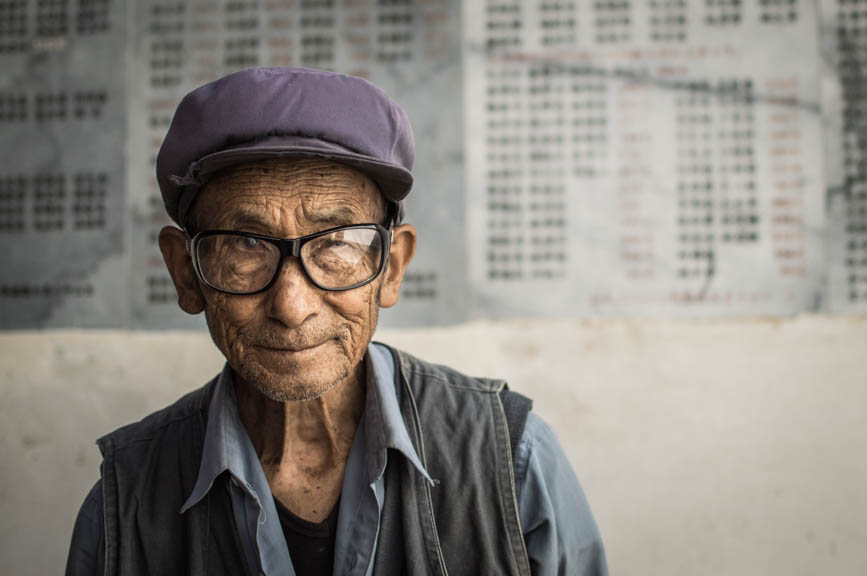
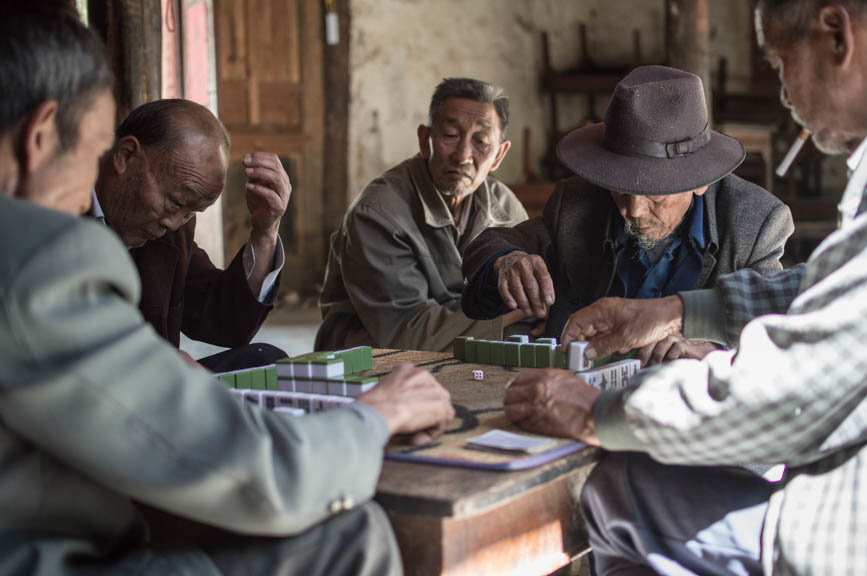
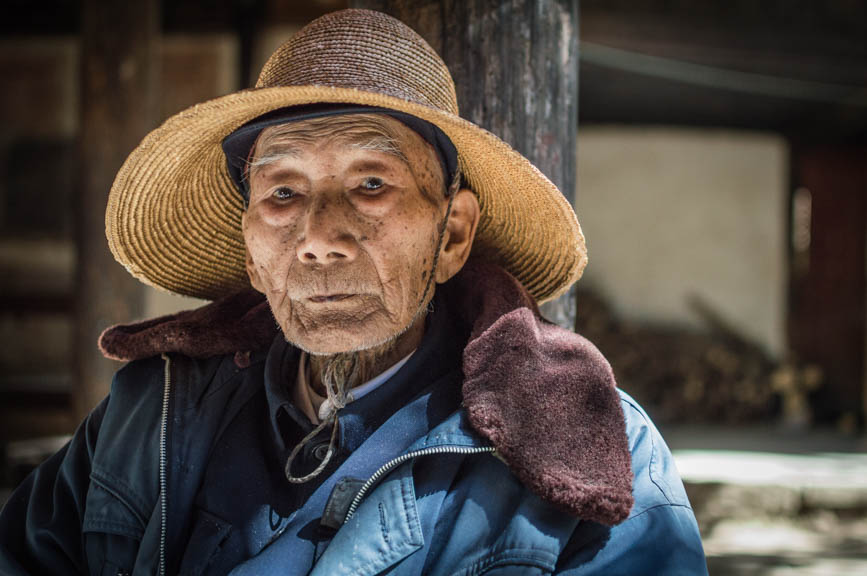
The only exception to Shaxi’s sleepiness is the Friday market. The village is injected with adrenaline as Bai and Yi people descend from the neighbouring hamlets to do their weekly shopping. Straw hats bob up and down, woven baskets are strapped onto backs, gradually filled with carefully selected produce. The old generation is in traditional dress, the young with plastic versions of the rattan basket and oversized smartphones in their hands.
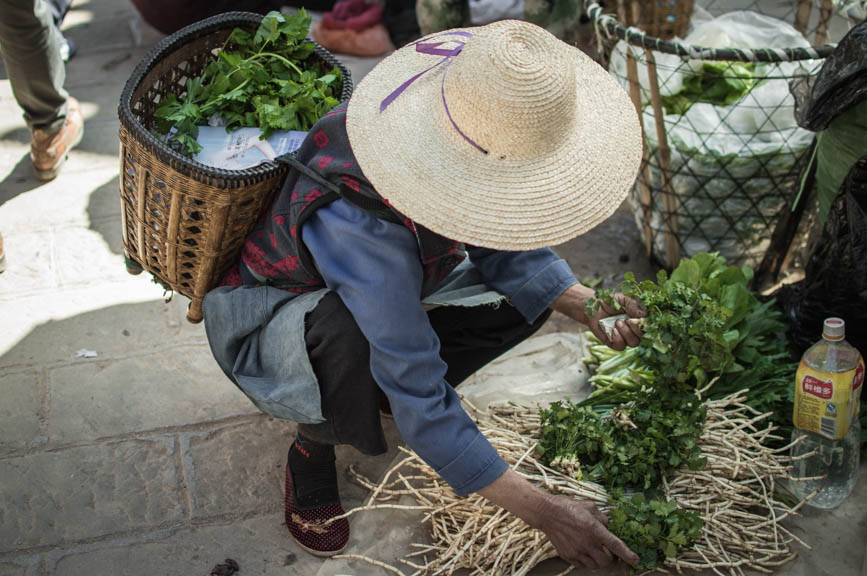
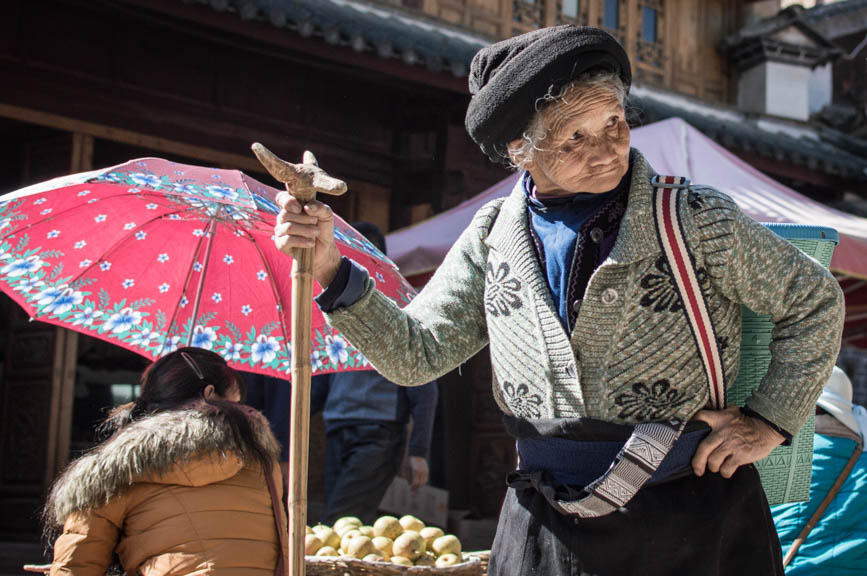
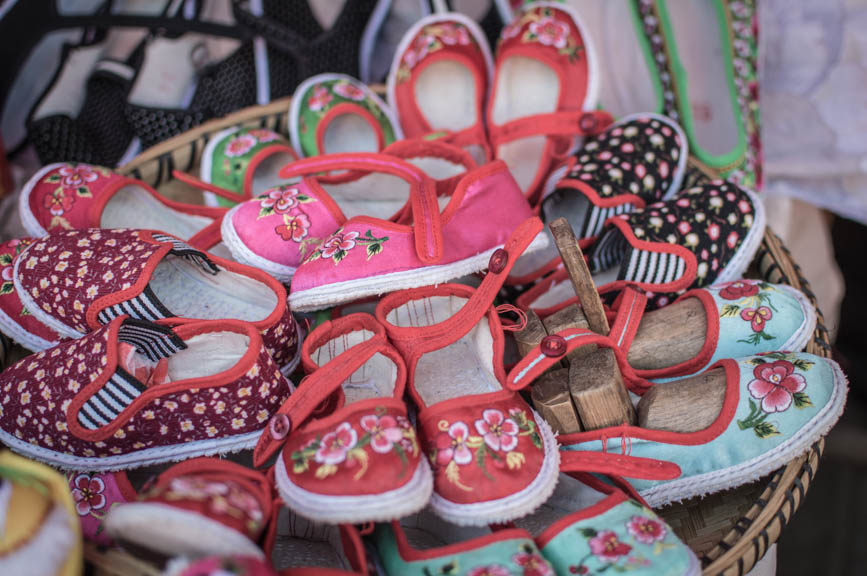
There is food for the kitchen and food for now. Yellow mung bean pudding is being sliced up and mixed with chilli oil, coriander and garlic. Baozi (buns) are steaming in metal stacks, each one dotted with pink dye as they emerge. Rice vermicelli is laddled out into bowls, topped with pickles, chicken and spring onions. An old lady sells soya bean milk, hot and cold or ice tea spiked with sugar syrup and jelly flakes, a mini-desert.
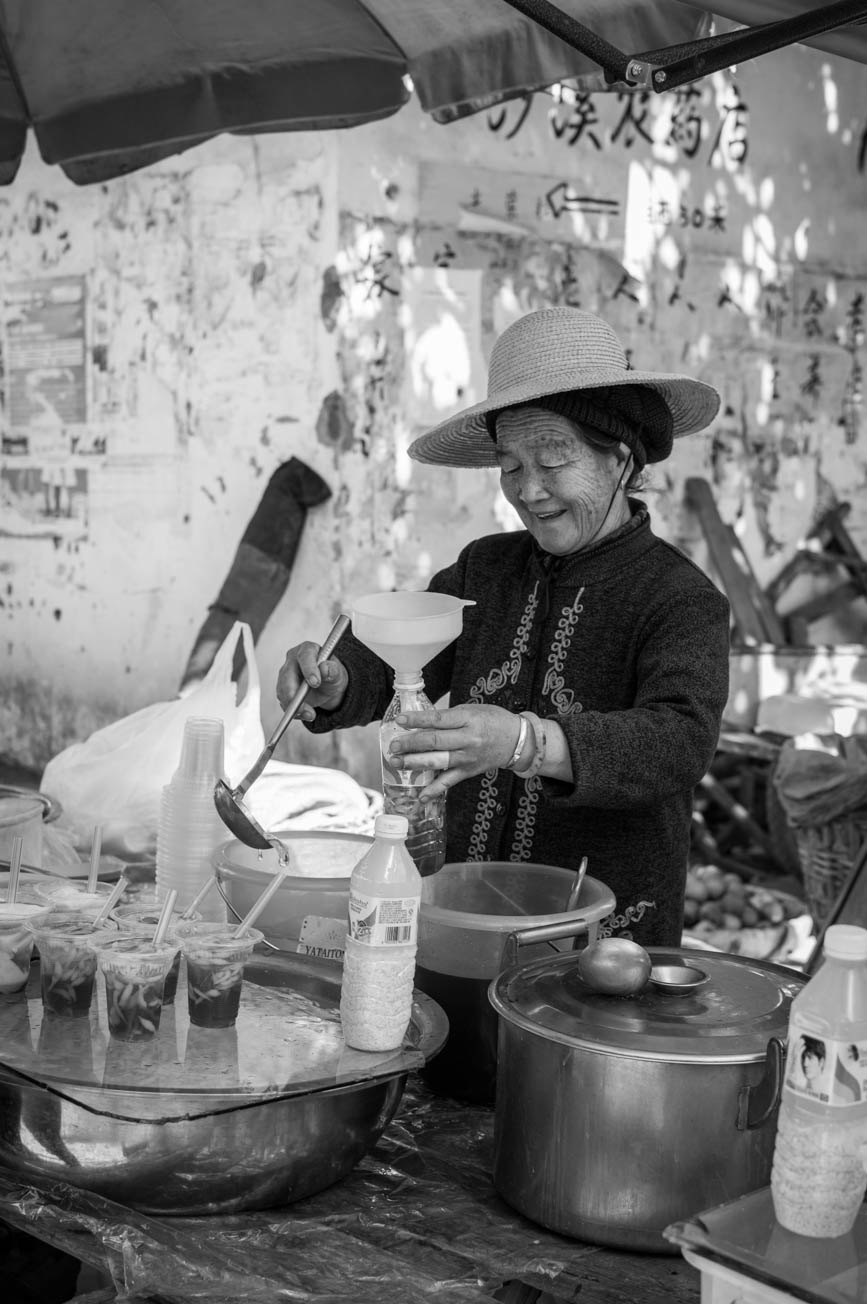
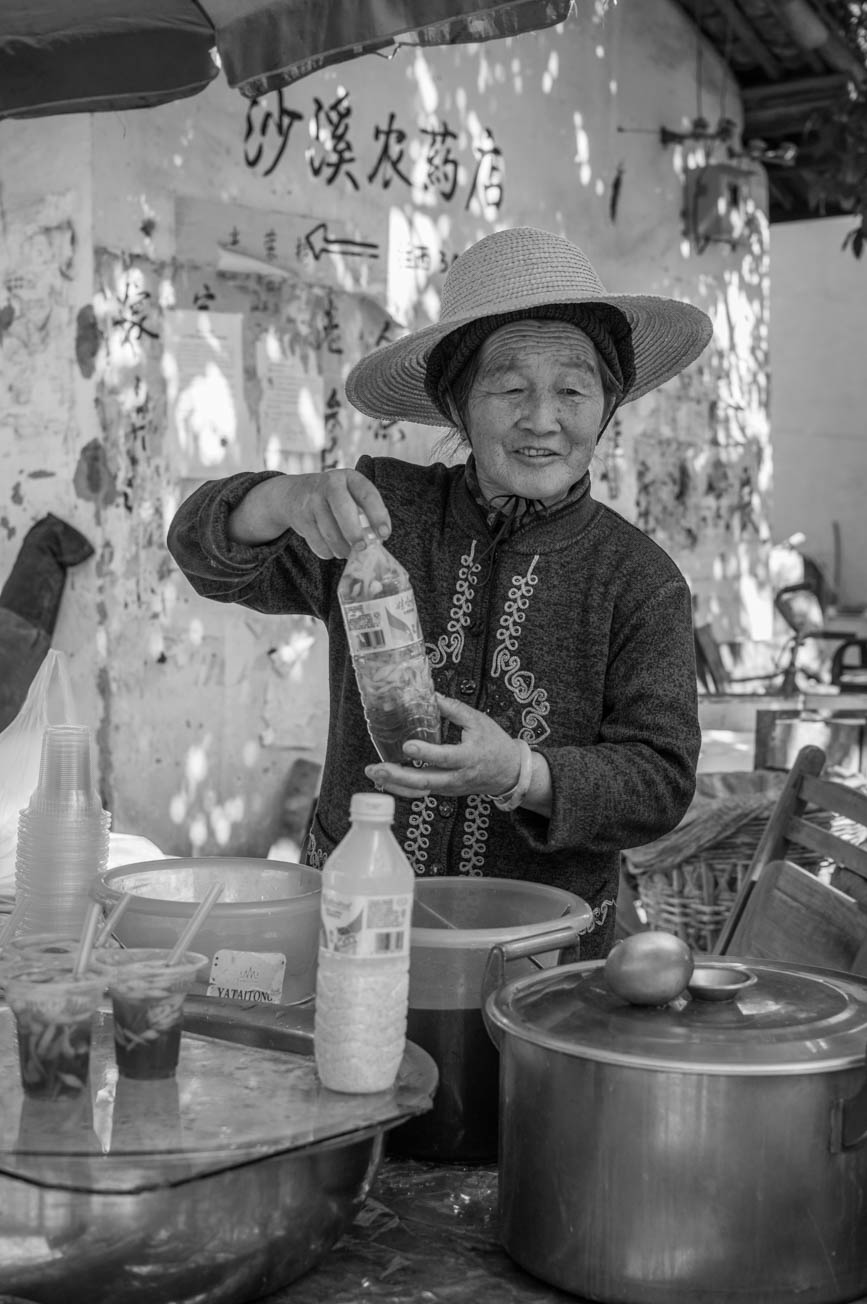
An entire roasted pig is on display, parts chopped off by weight, its juicy flesh emitting a salty vapour detectable a few streets away. A cigarette dangles from the corner of a man’s mouth, the ashes falling dangerously close to the stacks of different tofu being meticulously organised – fresh cubes, sweet scoopfuls and dry squares.
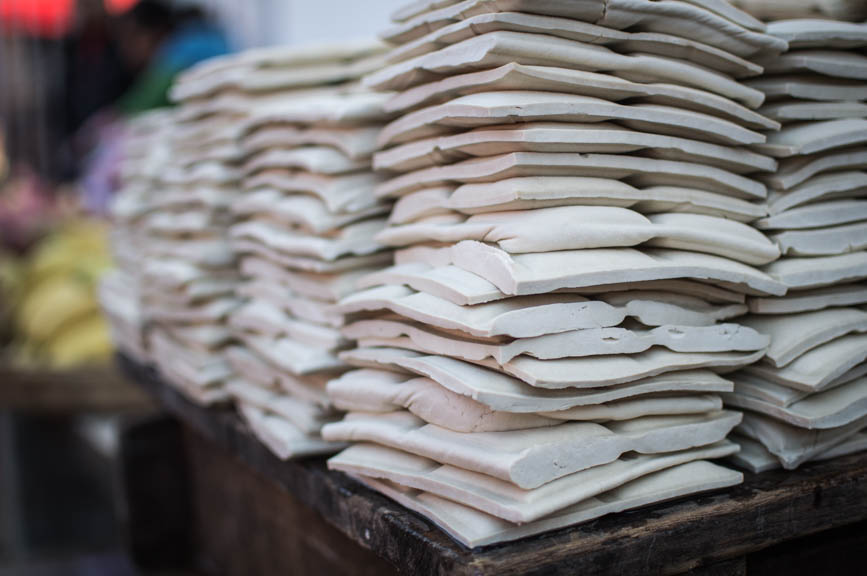
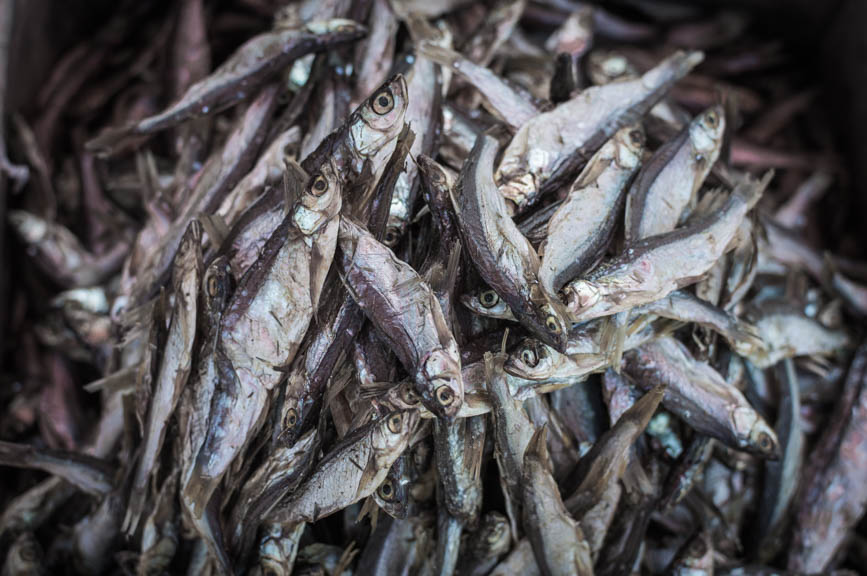
Near the beetroot coloured yellow carrots and round pale purple aubergines are live fish jumping about, splattering and squeezing water out of their too-small containers. The dry fish further along release a pungent scent, in the heat of the sun, you can smell the sea.
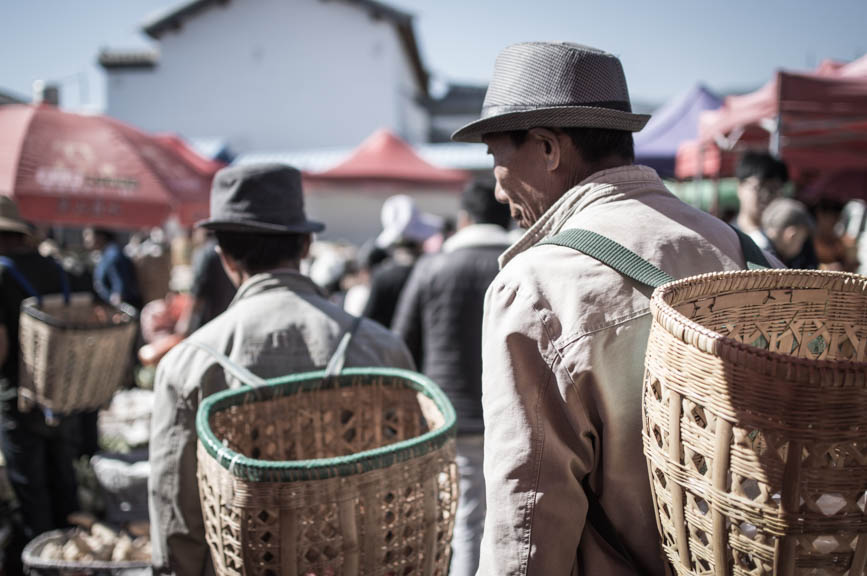
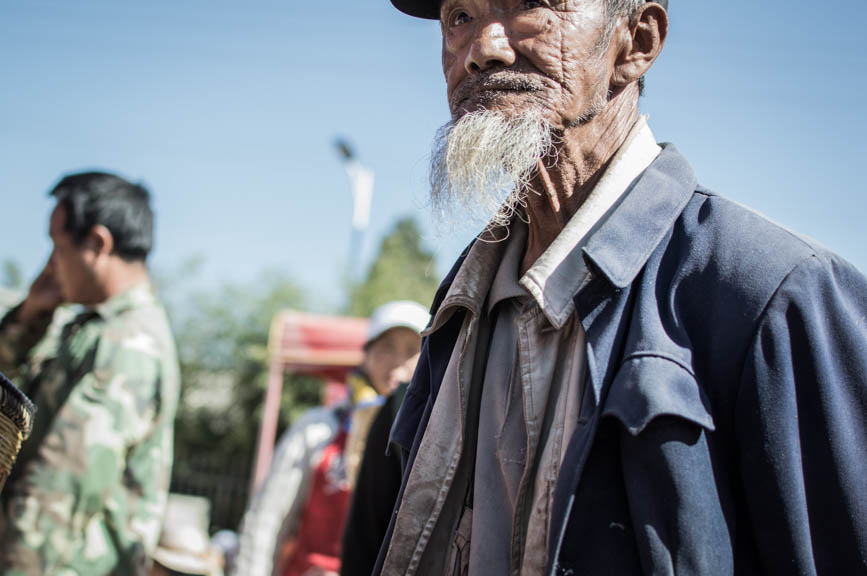
There is honey comb drenched in liquid so dark, it looks like slick oil, only this is caramel and sweet. The dessert cart is weighed down by various nut brittles, some capable of cracking your teeth and some kinder marshmallow treats. A trolley no bigger than one foot squared is dotted with colourful lighters, an attached loudspeaker announces their price of 1 yuan each.
We cannot resist some fresh walnuts and my mother shows me how to crack one against the shell of another in one hand without a nut cracker. We learn something new every day.
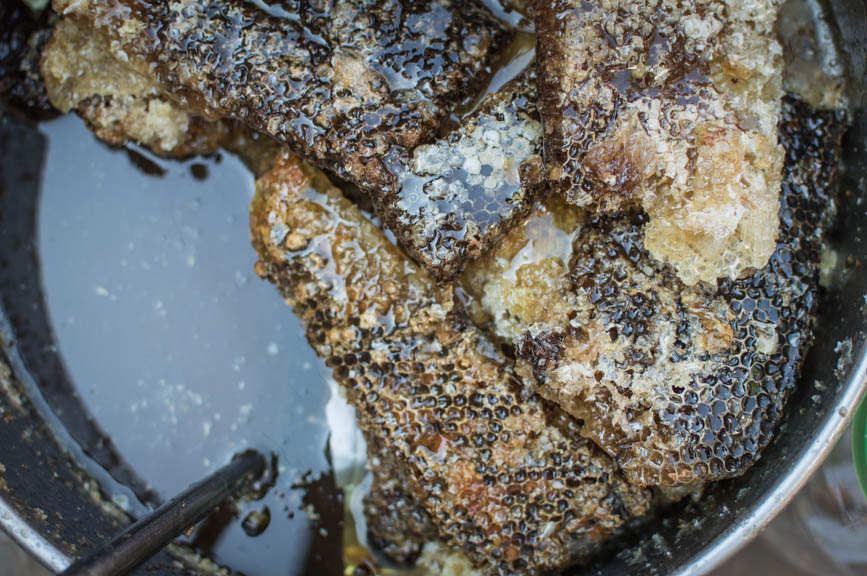
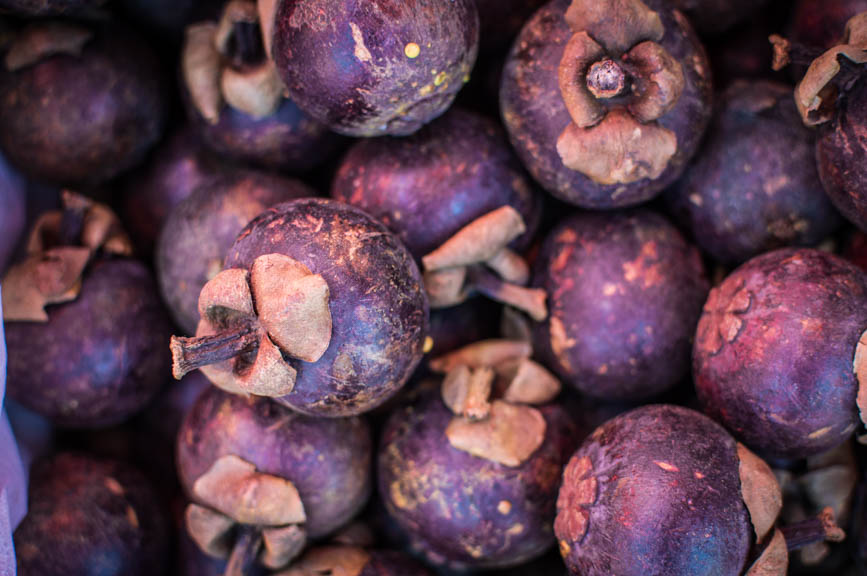
We lose ourselves for hours wishing we could stay forever, until we tear ourselves away, a hike awaits us.
The walk to ShiBaoShan 石保山 is an easy one. Through the rice fields, a few other villages and up the hills. There is no one, no entry fee, no gate, no other camera toting tourist. We have the river path to ourselves as we make our ascent up to the grottoes. The rocks on the peaks are cracked like burnt charcoal or corn on the cob, each kernel a hardened cube of lava. A temple is seared into the rock, carvings more than 1300 years old depict the bodhissatva Guanyin, protected by a persimmon red door.
They guard over the town, its ebony tiles grey from up here, the green fields turned to straw, under-saturated by the sun. The valley stretches further west, more hamlets and more fields to farm, a horizon of rich lands.

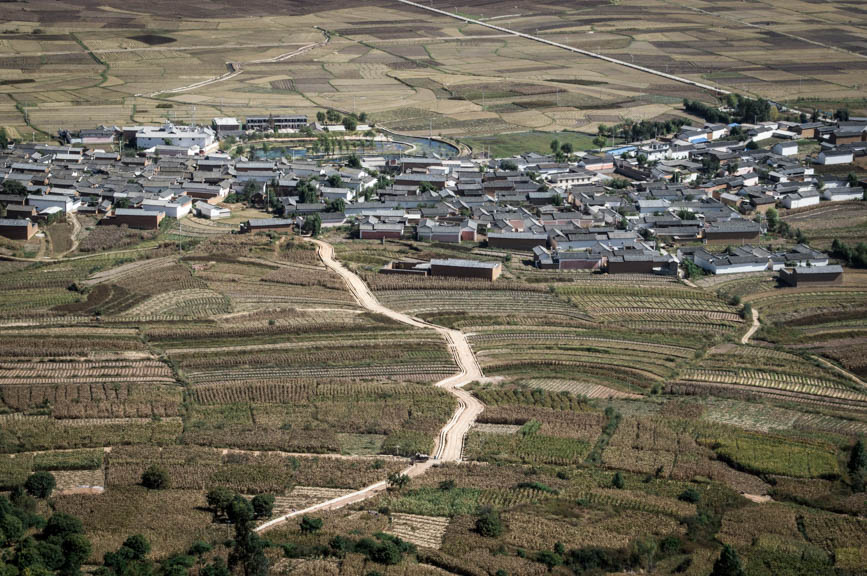
We slowly make our way back down to the village. The sun is setting and Shaxi is calm again, recovering from the excitement of the market. There is a glass of Portuguese red wine calling our name in a back lane somewhere near the main square.
Shaxi may have been a necessary stop on the Old Tea Horse Trade Route, but still today reflects a unique step back in time for the willing traveller. It is just on the cusp of perfection, balancing village life and a touch of comfort, hopefully for a long while still.
